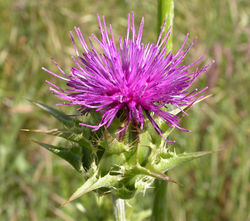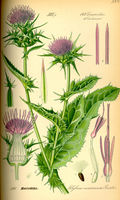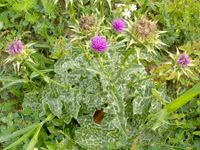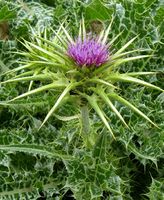Silybum marianum (weed)
| Literature database |
|---|
| 24 articles sorted by: |
| • year (recent ones first) |
| • research topics |
| • countries/regions |
| • affected crops |
| • list of natural enemies |
Silybum marianum (weed) (L.) Gaertn. - (blessed milkthistle)
This plant is native to southern Europe and Asia but now has a nearly worldwide distribution, especially in temperate and subtropical regions. It has been deliberately introduced into some countries as a medicinal herb. However, some of the claimed medicinal effects have been doubted by researchers. In many areas, it is a noxious weed of crops, pastures, as well as in roadsides and wastelands, forming dense patches. It can suppress crop growth, and in wheat it can cause yield losses of more than 30% (Khan et al., 2009). Although it is eaten by livestock, it contains a high concentration of potassium nitrate and can cause nitrate poisoning in cattle and sheep.
S. marianum grows to a height of around 2 m with a thick taproot. The plant is spiny and has shiny dark green leaves with milky-white veins that form a distinct pattern. The flower heads are purple and the seeds have a large pappus. They disperse by wind and can persist in the soil for at least 9 years.
- Other images of Silybum marianum (weed) (Wikimedia Commons, IPM Images and Open Media - click to enlarge)











